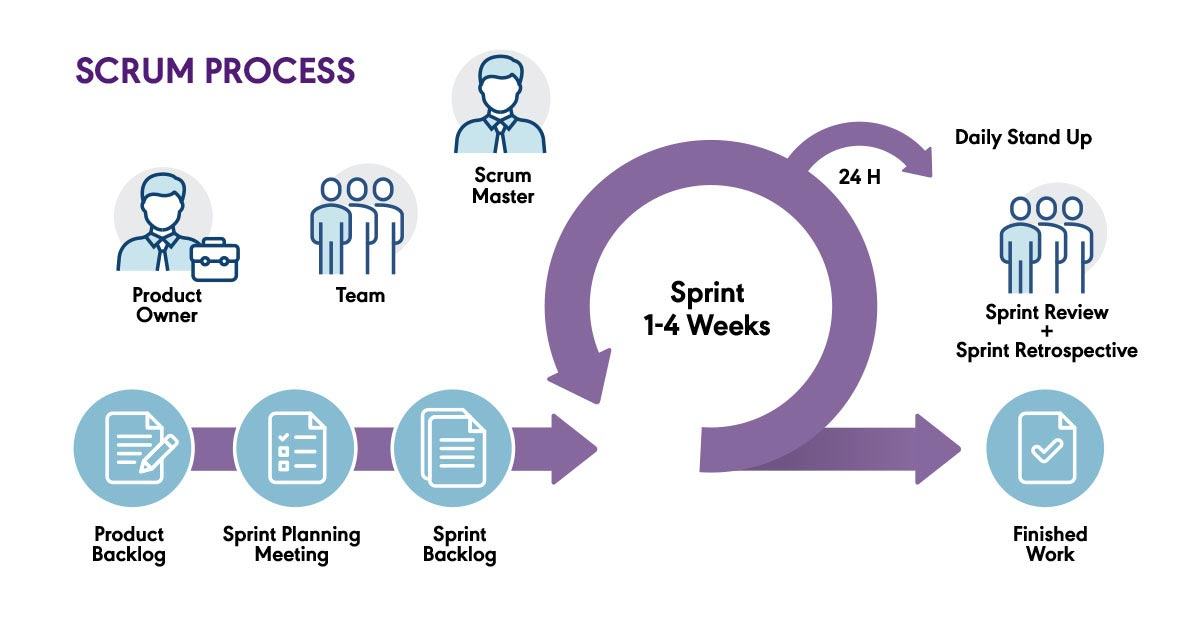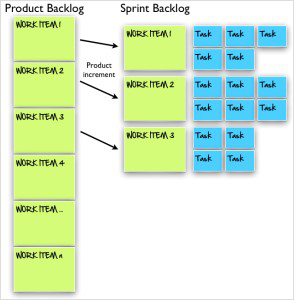What is it?
Scrum is the most used Agile method, being applied to both Software Engineering and non-software projects.

For some reason, Scrum adds a dozen words to project management.
Scrum roles
There are three roles present in a Scrum project:
-
Scrum Master
Responsible for managing the Scrum team in an environment which will succeed. It’s a facilitator which will manage resources for the planning meetings, and sprint retro and reviews.
-
Product Owner
Represents the end user, responsible for the project itself. Will raise the **most important requirements to be treated in a sprint and be the middle-man between the Scrum team and real end users.
-
Scrum team
The development team, which can include software developers, designers, and analysts. Normally, formed of six to ten people.
Product Backlog and Sprints
Each functionality to be implemented in a project is maintained in a list called Product Backlog. Each item of is called PBI, which stands for Product Backlog Item. The Product Backlog Item is divided in tasks, which are the smallest unit of work, representing an actionable step.

The development iteration is called Sprint, which lasts a few weeks. At each Sprint, the team will get some Product Backlog Items and transfer them to the Sprint Backlog, which will need to be implemented until the end of the Sprint.
Meetings
-
Daily Stand Up Meeting
The daily Stand Up Meeting is a daily meeting which update team members about the status of each task, lasting fifteen minutes. Each member must update what he did, what will do, and if is there any blockers.
-
Sprint Retro and Planning
At the end of each Sprint, a Sprint Retro meeting will assess the work done, what can be done to improve the process, and if the product is good enough to be delivered. At the beginning of each Sprint, a Sprint Planning meeting will prepare each member to what will he do and plan the overall Sprint ahead.